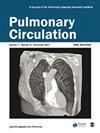小儿肺动脉高压患者导管术的单一机构麻醉经验
IF 2.2
4区 医学
Q2 CARDIAC & CARDIOVASCULAR SYSTEMS
引用次数: 0
摘要
心导管检查仍是诊断和治疗小儿肺动脉高压(PH)的金标准。关于最佳麻醉和气道方案还缺乏共识。这项回顾性研究描述了我们单个中心的小儿 PH 患者在接受导管插入术时的麻醉/气道经验,其中首选在自主呼吸时获取血流动力学数据。232 名患者共接受了 448 次导管插入术。在开始使用自然气道的 379 例患者中,274 例(72%)在未使用有创气道的情况下完成了手术,90 例(24%)使用了计划内有创气道,15 例(4%)需要使用计划外有创气道。中位年龄为 3.4 岁(四分位数间距 [IQR] 0.7-9.7);大多数患者属于尼斯分类 1 组(48%)或 3 组(42%)。需要使用血管活性药物和心肺复苏的病例分别为 14 例(3.7%)和 8 例(2.1%),其中 1 例死亡。与使用有创气道相关的特征包括:年龄 1 岁、第 3 组、先天性心脏病、21 三体综合征、早产、支气管肺发育不良、WHO 功能分级 III/IV、病例发生时未接受 PH 治疗、术前呼吸支持以及曾接受过干预治疗(p <0.05)。年龄 1 岁、第 3 组、早产和任何术前呼吸支持的复合预测因素与非计划气道升级显著相关(26.7% 对 6.9%,几率比:4.9,置信区间:1.4-17.0)。这种方法似乎是安全的,尽管主要使用自然气道,但严重不良事件发生率与之前的报告相似。不过,对于接受心导管手术的小儿 PH 患者,还需要进一步研究最佳麻醉方案和呼吸支持。本文章由计算机程序翻译,如有差异,请以英文原文为准。
A single institution anesthetic experience with catheterization of pediatric pulmonary hypertension patients
Cardiac catheterization remains the gold standard for the diagnosis and management of pediatric pulmonary hypertension (PH). There is lack of consensus regarding optimal anesthetic and airway regimen. This retrospective study describes the anesthetic/airway experience of our single center cohort of pediatric PH patients undergoing catheterization, in which obtaining hemodynamic data during spontaneous breathing is preferential. A total of 448 catheterizations were performed in 232 patients. Of the 379 cases that began with a natural airway, 274 (72%) completed the procedure without an invasive airway, 90 (24%) received a planned invasive airway, and 15 (4%) required an unplanned invasive airway. Median age was 3.4 years (interquartile range [IQR] 0.7–9.7); the majority were either Nice Classification Group 1 (48%) or Group 3 (42%). Vasoactive medications and cardiopulmonary resuscitation were required in 14 (3.7%) and eight (2.1%) cases, respectively; there was one death. Characteristics associated with use of an invasive airway included age <1 year, Group 3, congenital heart disease, trisomy 21, prematurity, bronchopulmonary dysplasia, WHO functional class III/IV, no PH therapy at time of case, preoperative respiratory support, and having had an intervention (p < 0.05). A composite predictor of age <1 year, Group 3, prematurity, and any preoperative respiratory support was significantly associated with unplanned airway escalation (26.7% vs. 6.9%, odds ratio: 4.9, confidence interval: 1.4–17.0). This approach appears safe, with serious adverse event rates similar to previous reports despite the predominant use of natural airways. However, research is needed to further investigate the optimal anesthetic regimen and respiratory support for pediatric PH patients undergoing cardiac catheterization.
求助全文
通过发布文献求助,成功后即可免费获取论文全文。
去求助
来源期刊

Pulmonary Circulation
Medicine-Pulmonary and Respiratory Medicine
CiteScore
4.20
自引率
11.50%
发文量
153
审稿时长
15 weeks
期刊介绍:
Pulmonary Circulation''s main goal is to encourage basic, translational, and clinical research by investigators, physician-scientists, and clinicans, in the hope of increasing survival rates for pulmonary hypertension and other pulmonary vascular diseases worldwide, and developing new therapeutic approaches for the diseases. Freely available online, Pulmonary Circulation allows diverse knowledge of research, techniques, and case studies to reach a wide readership of specialists in order to improve patient care and treatment outcomes.
 求助内容:
求助内容: 应助结果提醒方式:
应助结果提醒方式:


